A Whale Sharks Diet – Microplastics on the Menu?

Giulia and Alina preparing zooplankton sample taken from 200 meter depth. Photo © Dawid Szlaga
The Maldives archipelago, located roughly 700 km from the southwest coast of Sri Lanka, extends for over 800 km reaching the equator (0°34’S) in their southernmost atoll. Their geological history has provided them with unique features, which make it a very special place for filter-feeders. Here, steep drop-offs, sometimes as close as 100 m from the shoreline, cause upwelling of nutrients from deeper to surface waters which provides the basis for a rich zooplankton community. Zooplanktonic communities are made up of small animals freely swimming in the water, such as krill and copepods but also include the larvae of many fish and crustacean species. The zooplankters offer a great feast for filter-feeding, charismatic ocean giants such as whales, manta rays and whale sharks but also support many other marine species.
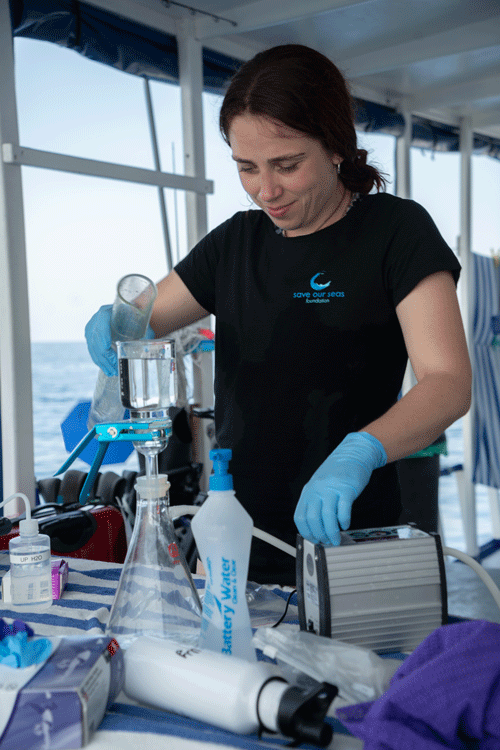
Alina filtering seawater. Photo © Dawid Szlaga
Microplastics have been reported from all over the globe and many marine species seem to be susceptible to ingest them. After finding microplastics among the faecal matter of whale sharks we decided to investigate whether zooplankters provide a pathway of microplastic exposure for marine species who rely on them as a food source. In order to answer this question, we wanted to sample the seawater at known whale shark feeding sites. We decided to endeavour on a 10-day field trip aiming to collect zooplankton and microplastic samples from specific depths following the abundance records and diving profiles of whale sharks in the Southern atolls of the Maldives.
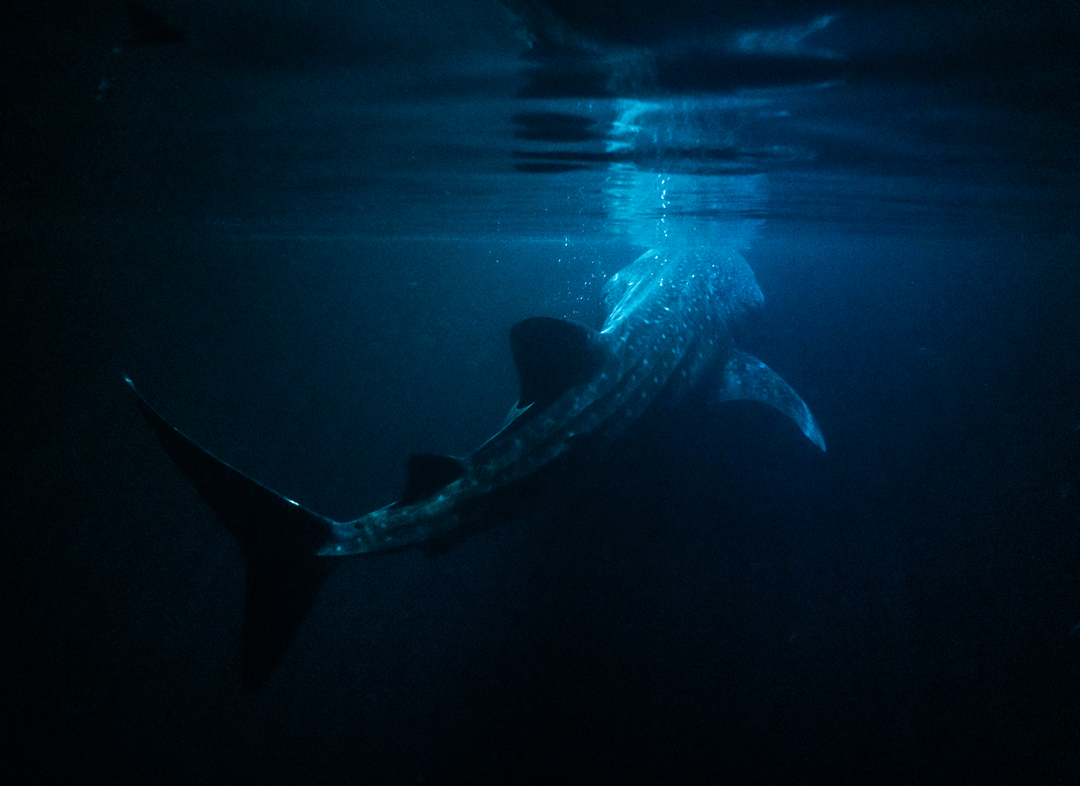
An encounter with a whale shark at night. Photo © Alina Wieczorek
Being used to carry out this work on purpose-built research vessels to which we had no access in the Maldives, I knew we had to improvise big-time. Thanks to their local knowledge and experience Giulia and the team from the MWSRP were able to charter a small boat and crew who were happy to take us to our sampling sites and support us throughout our day and night-time sampling. Once we had a boat we needed to figure out a way of deploying the zooplankton net and the Niskin bottle which we use to collect seawater. After a lot of emails, phone calls and discussions we came up with the design of a hand-operated winch system which we shipped together with the net and the Niskin bottle all the way to the Maldives.

Deployment of Niskin bottle. Photo © Dawid Szlaga
Shortly after arriving in the capital city Male, we endeavoured on our sampling trip. While steaming towards our first sampling spot we stopped for a test deployment where we lowered our plankton net to 20 m. When trying to wheel the net back up it seemed like an impossible task. Our winch system was meant to be able to pull several hundred kilos from depth but the drag of the net was too powerful and it took all the strength of our six people strong team to recover it.
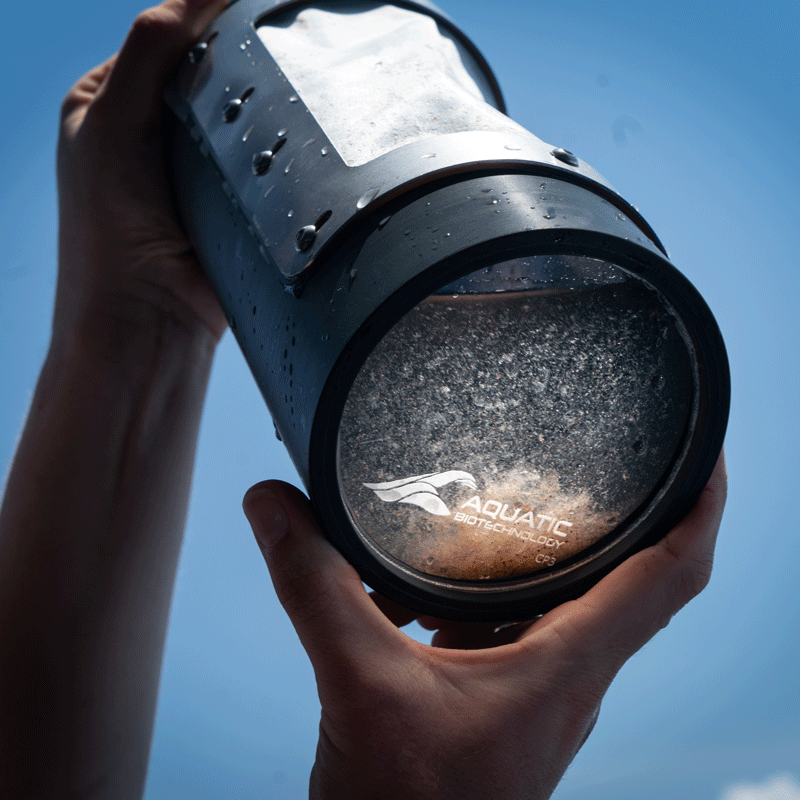
Zooplankton sample. Photo © Dawid Szlaga
Working as a marine scientist also means to accept that you can never predict what will happen when you work at sea – weather conditions, gear failure and the seemingly random patterns of animals moving through our vast oceans have in the past caused me a lot of grief and frustration. But we were far from being ready to give up yet. We had also brought an old back-up winch which was donated to us by Giulias colleagues from EAWAG Dübendorf in Switzerland. After having served years of deployment in various lakes the winch was ready for its retirement but as it happens to be this was going to be in the Indo-Pacific ocean, sampling zooplankton for our project. Due to its age, the winch needed some repairing and extra fixtures before we could even attempt to use it. Luckily, our cameraman Dawid turned out to also be a gifted engineer and after a brief stop at Maafushi island to get some tools and metal bars we managed to assemble a replacement winch.
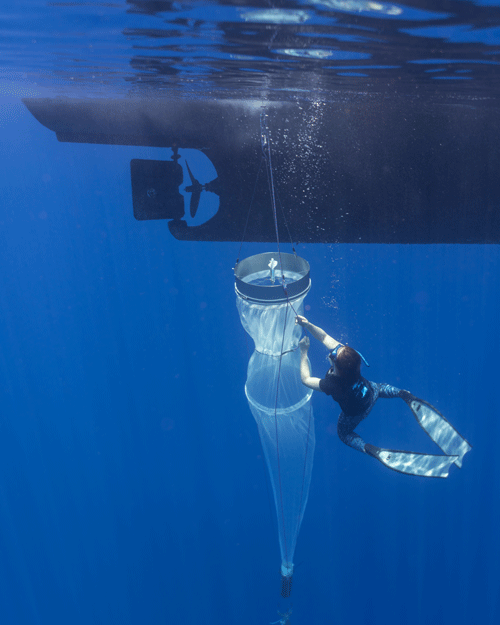
Alina entangling discrete depth plankton net. Photo © Dawid Szlaga
We were ready to give it another try and this time, to the relief and joy of all of us, we were able to deploy and recover the net from as deep as 200 meters. While it was possible, it was by no means easy. Each deployment with the hand-operated winch cost each one of us enormous strength and all that at temperatures of 35oC and higher. But we were ready to give it our all and with the crew’s dedication after ten days of sampling, we can proudly report having wheeled up 11 km of steel wire rope, collected 37 zooplankton and 73 water samples and covered over 700 kilometres with our boat.
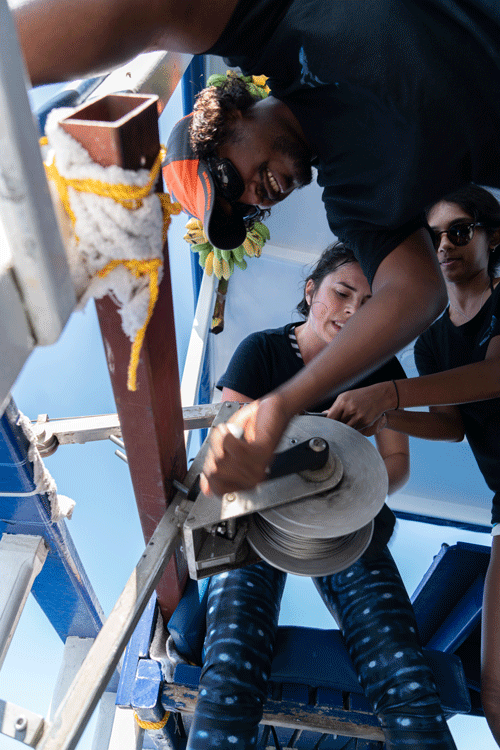
Giulia, Shameel and Yumin winching up the plankton net. Photo © Dawid Szlaga
The trip did come with some rewards though which included a three hour night encounter with a whale shark who was vertically filter-feeding around our boat. For me, this was my first encounter with a whale shark. The others explained to me how to behave around the whale shark and equipped with our camera Shameel and I jumped into the water to obtain some footage and biometrics of the whale shark, while Giulia and the rest of the team were collecting behavioural and injury data visible from the boat. Around us, a small pod of Indo-Pacific bottlenose dolphins joined giving us some life-long memories of this special encounter. I remember their clicking noises under the water and when the whale shark re-surfaced right in front of us with its large mouth wide open feasting on the zooplankton, I could not help but laugh into my snorkel full of joy. These moments are much rarer for a marine biologist than many people may imagine but experiencing them is what drives me to keep working long hours in the lab and in front of the computer. This is what now lies ahead of us when we will be analysing our samples.
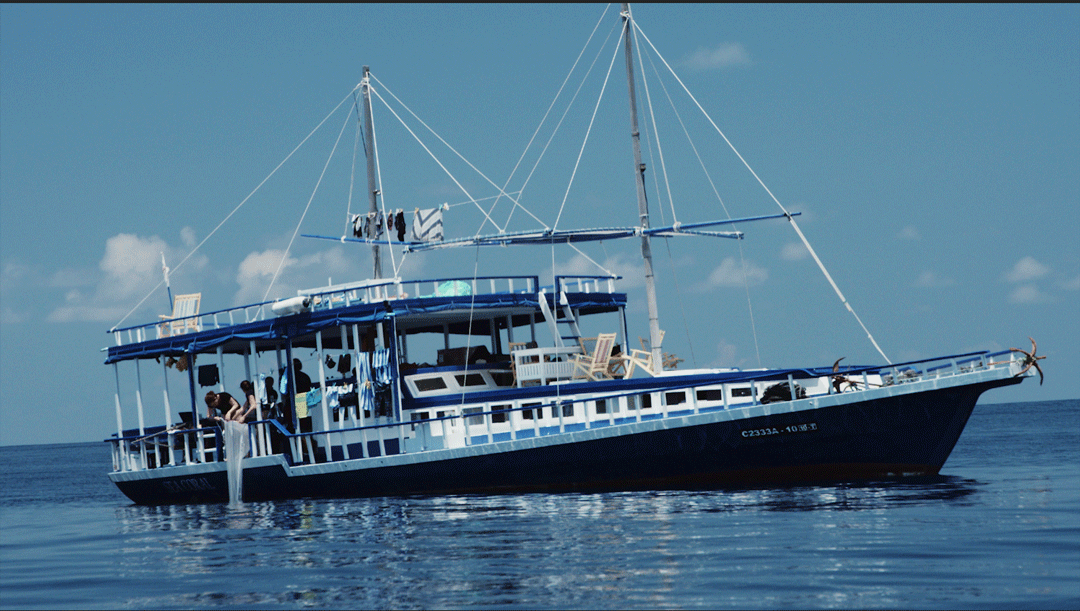
“Sea coral” at sampling station. Photo © Dawid Szlaga
